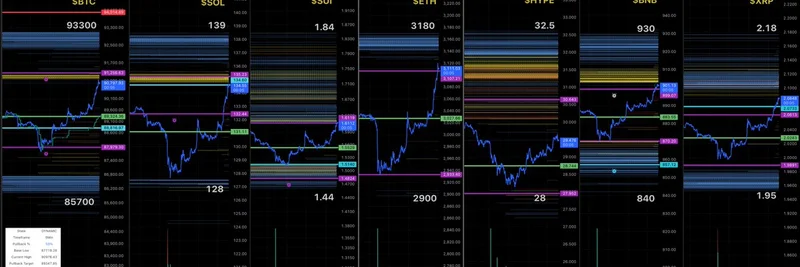In the fast-paced world of cryptocurrency, transparency is often touted as a core principle, thanks to the blockchain's inherent openness. Yet, as investor Kyle points out in his recent thread on X, the game around Digital Asset Treasuries (DATs) seems rigged in favor of those who play their cards close to the chest. DATs are essentially public companies that hold significant amounts of digital assets, like Bitcoin or Ethereum, on their balance sheets as a strategic move. Think of them as corporate hodlers, but with shareholders to answer to.
Kyle kicks things off by noting that no one really has the accurate numbers on these DATs, and that's intentional. It's ironic, isn't it? The blockchain lays everything bare, but the strategies around accumulating and managing these assets are shrouded in opacity. This lack of transparency benefits those who keep quiet, allowing them to maneuver without tipping their hand to the market.
A big point of debate in the thread is what happens if these DATs trade below their Net Asset Value (NAV). NAV is basically the value of the company's assets minus liabilities, divided by the number of shares. Trading below NAV means the stock is cheaper than the underlying assets it's holding—kind of like buying a dollar for 90 cents. The question is: Would the company sell off their crypto holdings in such a scenario?
Kyle argues there's a lot of nuance here, boiling down to two key factors: the tier of the DAT company and the quality of the asset they're stacking. In an ideal setup, an S-tier (top-notch) DAT backing an S-tier asset wouldn't sell. He draws a parallel to MicroStrategy (MSTR) back in 2022. Led by Michael Saylor, MSTR famously went all-in on Bitcoin, accumulating more even during downturns because they believed in its long-term value. Their goal wasn't quick flips; it was building a fortress of BTC.
This approach creates a win-win, or what Kyle calls a (3,3) scenario—a nod to game theory where both parties benefit maximally. The company holds firm on its stock price by not dumping assets, and as the crypto rebounds, everyone looks smart. Of course, risks abound. If MSTR had bet on lesser coins like Bitcoin Cash (BCH) or Litecoin (LTC) instead of BTC, things might have gone south. And let's not forget, Bitcoin in 2021 wasn't the undisputed king it is today; Saylor's conviction was next-level.
Applying this to today's scene, Kyle is bullish on BMNR (BitMine Immersion) and SBET (SharpLink Gaming). These are emerging DATs focused on Ethereum (ETH), much like MSTR with BTC. BitMine, associated with analyst Tom Lee, aims to raise billions to accumulate and stake ETH for yields. SharpLink is in a similar boat, building ETH treasuries amid market volatility. Kyle believes they'll hold the line and keep accumulating, strengthening their positions over time.
Things get trickier with B-tier (mid-level) assets and companies. Here, the incentives might shift toward selling if pressures mount. But Kyle's advice? Don't waste time gaming out these scenarios. If an asset isn't fundamentally strong to begin with, slapping a DAT label on it won't magically fix things. Stick to the winners—high-quality assets backed by committed teams.
Replies in the thread echo and expand on this. One user highlights leverage as a factor; over-leveraged DATs might be forced to sell, while those locked into holding (by design) have an edge. Another points out that many DATs have shaky business models propped up by bull market hype, potentially crumbling in a bear phase with mounting debts.
At the end of the day, Kyle's thread is a reminder to focus on fundamentals in crypto investing. Whether you're eyeing meme tokens or established assets like ETH, the principles hold: Bet on quality, conviction, and long-term vision. As DATs like BMNR and SBET carve their paths, they could reshape how companies interact with blockchain assets, potentially influencing even the meme token ecosystem by injecting institutional stability.
What do you think? Will these DATs hold through the dips, or is the pressure to sell inevitable? Drop your thoughts in the comments below.

